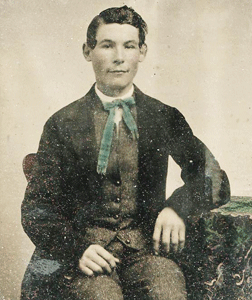“[They] pointed out that the Toronto Bay was becoming more or less a cesspool from the excremental and other filth hourly flowing into it. Until the last few years comparatively little sewage found its way into the bay, as the water-carriage system had not been generally adopted. The pollution of the soil from privy pits has led recently to the construction of a large number of water closets, and the number must steadily increase, not only by substituting the water closet for privy, but from the rapid increase of population by growth and annexation.” William Canniff, Toronto Medical Officer of Health, (The Globe, Sept. 28, 1886).
In 1879 and 1886 five of Charles Peterkin’s children were felled by a much-feared medical scourge of the time: diphtheria. Diphtheria is characterized by fever, swelling of the throat and difficulty breathing. While the disease was associated with poor sanitary conditions and with neighbourhoods where privy pits were situated too near to houses, doctors reported that it had managed to penetrate the homes of Toronto’s well-known citizens, perhaps because of badly installed drains and waste-pipes.
According to widely-reported statistics the great majority of patients recovered their health. Mostly children caught the disease and doctors insisted that they should be isolated. However, May Munro and Norman Joseph died in August of 1879 at 177 University Avenue, a one-storey cottage, and Stuart Settle, Lena Emma and Herbert Bruce all died within three weeks of each other in 1886 at the cottage on Bellevue Place (now Wales Ave.). It is likely that all were living in close proximity to each other. Their deaths occurred within 3 to 19 days of diagnosis.
Epidemics of diphtheria were raging in Russia and several European countries at this time, but other diseases, among them smallpox, measles, cholera infantum and typhoid fever, appear to have taken an even greater toll in Toronto.
William Canniff, Toronto’s Medical Officer of Health, wrote that “There need be no surprise that there are frequent outbreaks of diphtheria, fevers, and kindred diseases, in view of the inefficient plumbing so often existing in our city. Homes that present a most attractive exterior have the germs of deadly poison concealed from view in closets and drain-pipes. Nothing needs closer attention than these, and yet nothing is more neglected. “ (The Globe, Sept. 1, 1886)
Of the eleven children fathered by Charles Peterkin with his wife Theresa Bywater, only five reached adulthood, and of these only one, Charles Robert jr., gave his parents grandchildren and great-grandchildren.














 Back in the summer of 1953 I visited Scotland for the first time. On my own I joined a Thomas Cook bus tour and was thrilled to learn that we would spend a night at Huntly Castle Hotel which we were told had been built in the 1700s by George, Duke of Gordon, of stones retrieved from the old ruined Castle nearby. And lucky me I had the chance to spend the night in a murdered Duchess’ four-poster canopy bed.
Back in the summer of 1953 I visited Scotland for the first time. On my own I joined a Thomas Cook bus tour and was thrilled to learn that we would spend a night at Huntly Castle Hotel which we were told had been built in the 1700s by George, Duke of Gordon, of stones retrieved from the old ruined Castle nearby. And lucky me I had the chance to spend the night in a murdered Duchess’ four-poster canopy bed.
